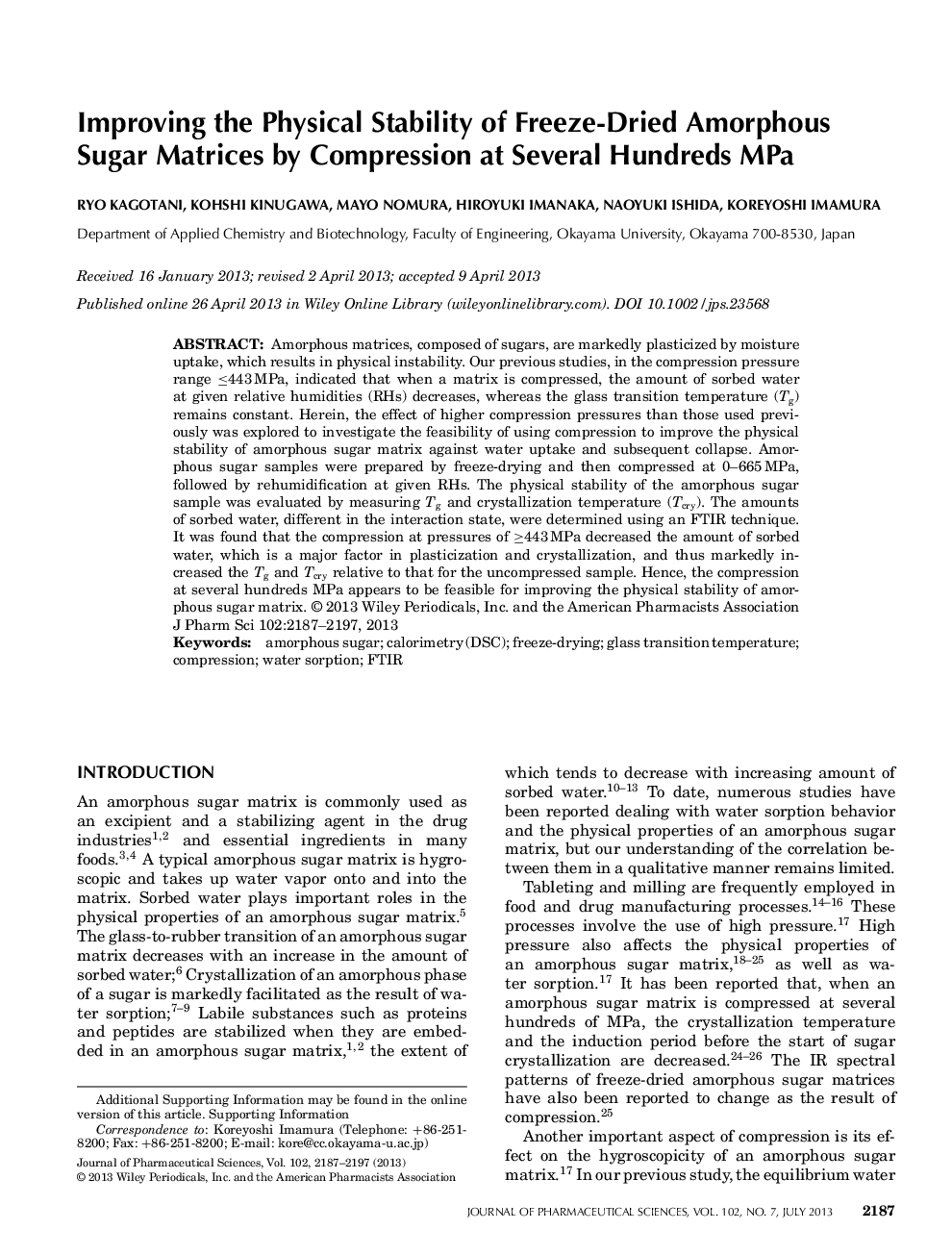| Article ID | Journal | Published Year | Pages | File Type |
|---|---|---|---|---|
| 2484746 | Journal of Pharmaceutical Sciences | 2013 | 11 Pages |
Abstract
Amorphous matrices, composed of sugars, are markedly plasticized by moisture uptake, which results in physical instability. Our previous studies, in the compression pressure range â¤443 MPa, indicated that when a matrix is compressed, the amount of sorbed water at given relative humidities (RHs) decreases, whereas the glass transition temperature (Tg) remains constant. Herein, the effect of higher compression pressures than those used previously was explored to investigate the feasibility of using compression to improve the physical stability of amorphous sugar matrix against water uptake and subsequent collapse. Amorphous sugar samples were prepared by freeze-drying and then compressed at 0-665 MPa, followed by rehumidification at given RHs. The physical stability of the amorphous sugar sample was evaluated by measuring Tg and crystallization temperature (Tcry). The amounts of sorbed water, different in the interaction state, were determined using an FTIR technique. It was found that the compression at pressures of â¥443 MPa decreased the amount of sorbed water, which is a major factor in plasticization and crystallization, and thus markedly increased the Tg and Tcry relative to that for the uncompressed sample. Hence, the compression at several hundreds MPa appears to be feasible for improving the physical stability of amorphous sugar matrix. © 2013 Wiley Periodicals, Inc. and the American Pharmacists Association J Pharm Sci 102:2187-2197, 2013
Keywords
Related Topics
Health Sciences
Pharmacology, Toxicology and Pharmaceutical Science
Drug Discovery
Authors
Ryo Kagotani, Kohshi Kinugawa, Mayo Nomura, Hiroyuki Imanaka, Naoyuki Ishida, Koreyoshi Imamura,
